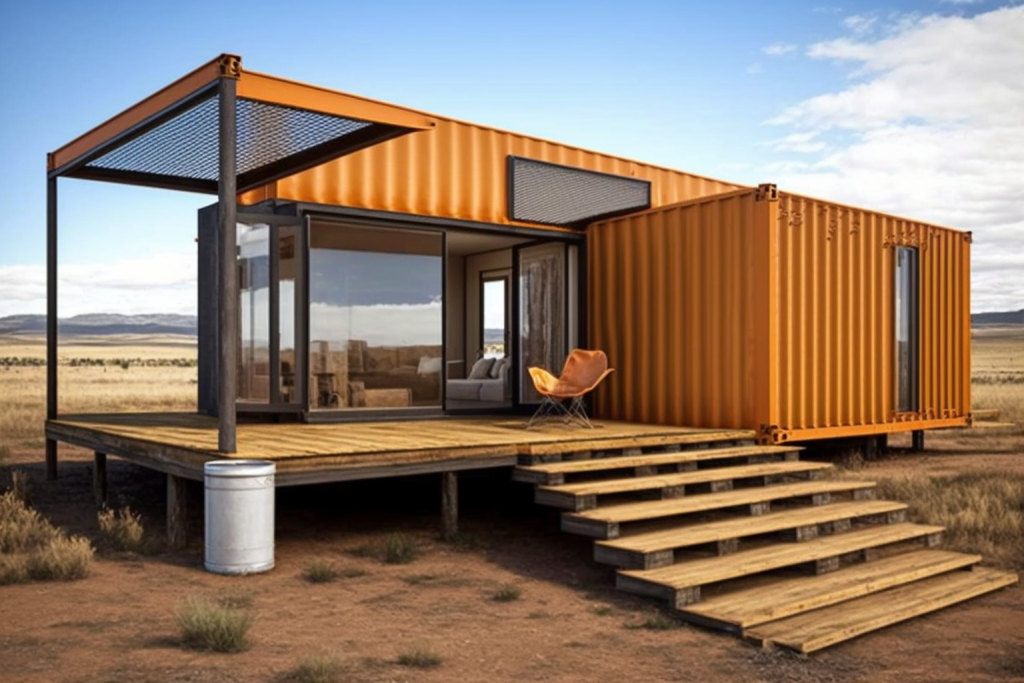
Shipping containers are useful items; although they are mostly known for use in transporting goods, you can repurpose them to extend their useable life. Some people convert them into shipping container homes, while others use them to build garages. Shipping containers are also excellent for building workshops if you need a dedicated space for woodworking, metalwork, or working on your vehicles. A workshop is an excellent place to do all your dirty and greasy work without messing up the rest of your house.
If you require a workshop, this article will help you learn how to build a shipping container workshop that addresses all your needs.
Table of Contents
Do Shipping Containers Make Good Workshops?
Yes, shipping containers make good workshops because they are durable and portable. They are also easy and cheap to build. Read on, and we will explain why you should consider building a shipping container workshop as your next project. You can also check our shipping container garage article if you are interested in building one on your property.
Why Make a Shipping Container Workshop?
Below are some of the best reasons you should build a shipping container workshop instead of a traditional one.
Low Cost
Shipping container workshops are cheap. They are easy to build, so the labor costs of building one are reasonable. You can reduce labor expenses by doing most of the construction yourself if you have excellent handyman skills.
You can further reduce costs by buying used shipping containers instead of new ones. Although they are used, these shipping containers are still sturdy and suitable for building. However, inspect the shipping containers you intend to buy to ensure they are free from defects like holes or signs of rusting.
Durable
Shipping containers are sturdy and can lend their strength to your workshop. Due the nature of their original intended use, shipping containers are manufactured to withstand enormous amounts of pressure, humidity, and temperature without rusting or getting damaged. Manufacturers use thick pieces of metal to build shipping containers to ensure that they survive long distances aboard ships. Most shipping containers are also designed to survive constant exposure to saltwater.
Portable
While most workshops are intended as permanent structures, shipping container workshops can also be portable. This means that you can transfer them to a new location if needed. If you plan on expanding your house, you can easily disassemble a shipping container workshop and relocate it within your property. It is also possible to transfer your shipping container workshop to another location should you sell your current property and move to a new one. This can help you save money because there’s no need to build a new workshop completely from scratch.
Security
Thanks to their sturdy materials, shipping container workshops make for secure structures. The thick high-grade steel walls are more resistant to break-ins compared to the conventional thin metal-walled workshops. This can help protect your tools, equipment, and materials from getting damaged, vandalized, or stolen.
Shipping container workshops are also resistant to fire, unlike wooden workshops. In addition, shipping container workshops can withstand strong winds and rain, making them ideal if you live in an area that experiences frequent inclement weather conditions.
Things to Consider Before Turning a Shipping Container Into a Workshop
Before you start building your shipping container workshop, there are some factors you need to consider.
Permits
Check with your county’s building and zoning department if you need a permit to build your workshop. Ask for a list of requirements to know exactly what to submit if a permit is required.
Power Source
Ensuring that your workshop has a steady source of electricity is of paramount importance. You can have an external power source by connecting your workshop to your house’s electrical system. You can also opt for a separate or internal power source by using a generator or installing solar panels on the roof of your workshop. What’s great about having an internal power source is that you are sure that your workshop will always have electricity, even if the power in your residence goes out. If you plan to install solar panels, read our article about shipping container roof plans to choose the best type for your workshop.
Receive Quotes from Multiple Barndominium Builders & Kit Providers Near You Today (It's Free!)
Fill in this 1-minute form below and receive estimates for your project without having to find them yourself! Let them do the work.
Internal or External Insulation
Decide whether to use internal or external insulation in your shipping container workshop. If you want to retain the industrial-looking exterior of your workshop, you can use internal insulation. However, this will add thickness to the interior walls and reduce your working space. You can use internal insulation if you combine several shipping containers to build your workshop since you can afford to sacrifice a bit of space.
External insulation is recommended if your workshop is a single-container affair since it won’t take up living space. However, external insulation is more expensive than internal insulation because you’ll want to cover the insulating material you use. For example, if you use spray foam on the external walls of your workshop, you can use wood or plaster to cover it. This will protect the insulating material and improve the exterior look of your workshop. Check our Instagram account to see more images of exterior design ideas for your shipping container workshop.
Custom Features
Think about the customer features you want in your workshop. If you plan on entertaining customers, plan for a large workshop with enough room to build a small office. This provides you with a suitable place for meeting customers. If you don’t have a separate storage area, plan for storage options like hanging shelves to ensure that your workshop is organized. Read our shipping container storage article if you want to build a separate storage area for your workshop.
How Do You Make a Shipping Container a Workshop?
If you are interested in making a shipping container workshop, below are the steps to ensure that you have a durable workshop that can serve all your needs.
Plan Your Layout
Before heading to the drawing board, think about what you want your workshop to be. Ask yourself what you will use it for and list the features you plan to include. This can help you develop a functional layout. Double-check your list to ensure you do not forget a crucial feature since adding new features may force you to redraw your layout, resulting in delays. It is also important to draw a plan because you most likely need to secure a building permit to construct a workshop, and one of the permit requirements is submitting a plan for your structure.
For example, if you plan on building a woodworking workshop, you’ll need adequate space for a woodworking bench. If you frequently work on large projects, ensure enough space for a large woodworking bench. You’ll also need shelves for your tools like saws, clamps, power drills, planes, etc. It will also be ideal to have enough storage for the timber you will use.
Choose the Right Shipping Container Size
Shipping containers are often eight feett wide and come in different lengths. You can find 10-foot, 20-foot, and 40-foot containers. Once you have drawn up your plans, you can estimate the size and number of shipping containers you need. It is better to have shipping containers that are larger than what you need than to get stuck with small containers.
Buy Your Shipping Containers
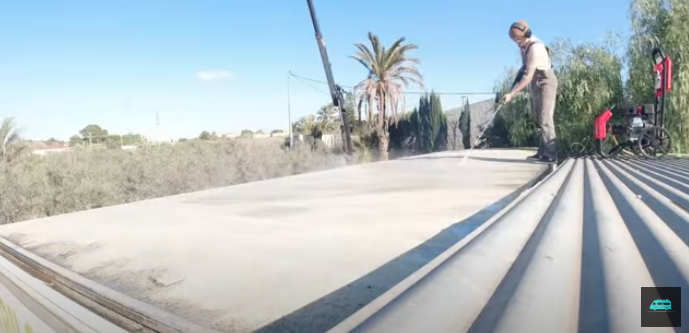
Sourcing your shipping containers from the right supplier is critical to building your workshop. Search for multiple suppliers and compare their prices and the quality of the containers they sell. You can look at customer feedback to see what their customers are saying about them. If possible, go for a local supplier since they might offer free shipping of the containers. Buying from a local supplier also means it might be possible to go to their store and inspect the quality of the shipping containers they sell.
Add a Foundation and Flooring
A foundation is crucial for any building project, more so with a shipping container workshop, because you will be bolting your containers in your foundation. This will help reinforce your workshop and ensure it stays in place during hurricanes. If your planned location is flood-prone, elevate your foundation to keep the workshop safe from flood water. This will help prevent your workshop from rusting and keep your tools and equipment safe.
Most shipping containers have floors made from marine plywood. While this may suffice for some, having a concrete floor for your workshop might be better. A concrete floor is more durable, especially if you plan on working with heavy materials.
Insulate Your Workshop
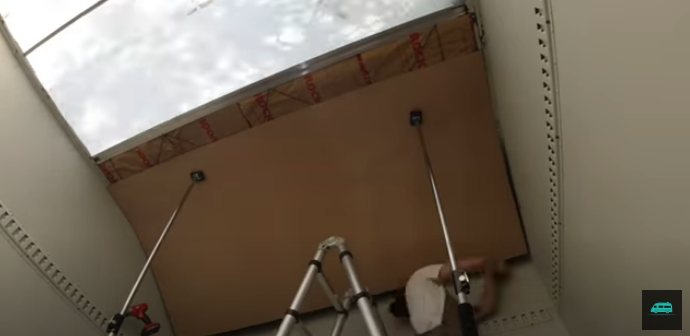
Adding an insulation system is a crucial step in building your workshop. It can help protect the contents of your workshop from excessive heat. Adding insulation can also help make your workshop comfortable to work in, especially during hot summer days.
Install Electrical and HVAC Systems
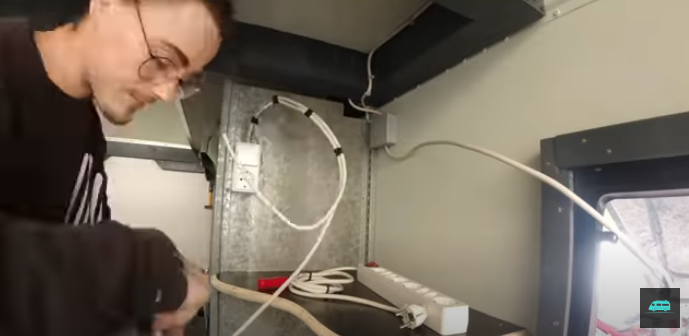
The next step is to install the electrical and HVAC systems. The electrical system is for powering your equipment and tools, while your HVAC system makes your shipping container workshop comfortable. You can only install these systems on your own if you are licensed to do so.
Adding a ventilation system is highly recommended. It can increase the comfort inside your workshop. It can also help eliminate fumes or smoke if you use chemicals.
Add Custom Features
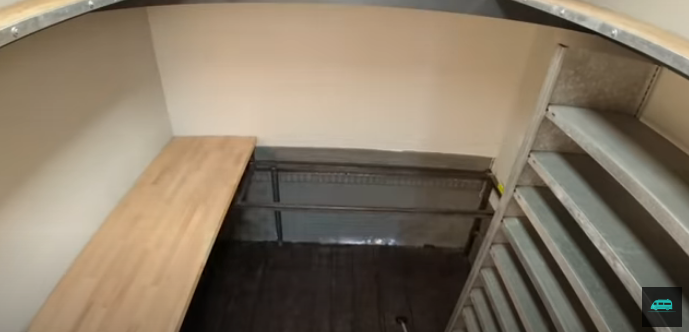
The last step in building your shipping container workshop is customizing it. It is up to you to decide on the customization level you want. If you are working on a tight budget, prioritize features that are critical to your work. Examples are shelves for your tools or storage areas for your materials and finished products.
If you have the time and budget, you can customize the exteriors of your workshop. Give the exteriors a lick of paint if needed. Aside from giving it a unique look, painting the exterior of your workshop adds another layer of protection against rain and dirt.
Frequently Asked Questions
How much does it cost to turn a shipping container into a workshop?
Depending on their size and condition, used shipping containers range between $1,200 and $3,500 each. If you want to use new shipping containers, expect to pay between $2,800 and $7,800 each. The additional cost may be worth it since new containers are stronger and will last longer than new ones.
How hard is it to modify a shipping container into a workshop?
It is easy to modify a shipping container into a workshop because it already has an open space where you can work. You can simply add shelves for your tools, lighting fixtures, and electrical and HVAC systems. However, it will get more challenging if you plan on a large workshop requiring more than one shipping container. Check out our shipping container article to learn more about these versatile building materials.
Should I insulate the floor of a shipping container?
Although it will add to your expenses, insulating the floor of a shipping container is recommended. It can increase your comfort while working in your workshop. If you don’t have the budget yet to insulate your workshop floor, insulating the walls and ceiling of your workshop should suffice until you have saved enough funds to insulate your workshop floor.
Conclusion
Building a shipping container workshop is an excellent option if you want a cheap and easy-to-build structure. It is durable because shipping containers use thick pieces of metal. It is easy to customize to have all the features you need. It is portable, making it easy to relocate if needed. It is also easy to expand if you need more space in the future.
If you plan on building a shipping container workshop, remember the essential factors mentioned earlier and follow our guide, and you will have a workshop that will inspire you to practice your craft daily. Follow our Facebook page to learn about other unique metal structures like shouses, shipping container houses, and barndominiums.

